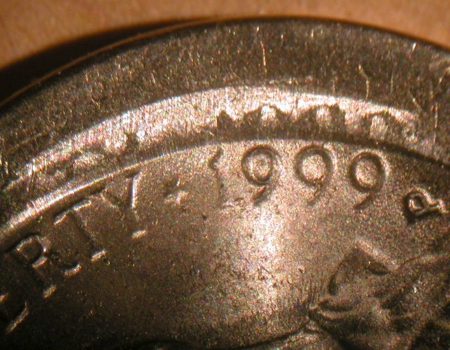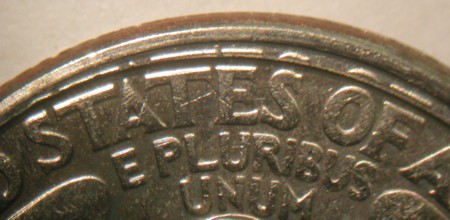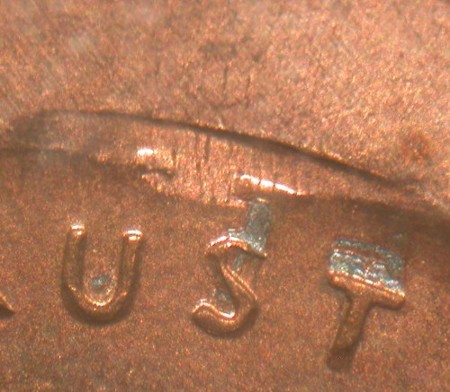Part VI. Striking Errors:
Stutter Strikes
Definition: A stutter strike occurs when the hammer die makes transient contact with a planchet without there being any resistance provided by the hammer die. Resistance is provided by other means. After the initial light contact, the hammer die completes its downstroke in a position medial to the site of original contact. The stutter strike is restricted to a thin outlying crescent that is sharply demarcated from the adjacent complete design. Directly opposite the stutter strike, on the face struck by the anvil die, the original surface of the planchet is persists unaltered.
There are three types of stutter strikes which are not closely related to each other except with respect to the final outcome:
Type I. Here the resistance is provided at one pole by a stiff but still somewhat mobile collar. It’s surmised that the die or die assembly has to be loose as well because stiff collar errors are common but stutter strikes are not.

Type II. In this form of stutter strike, one pole of a planchet is tipped up into the path of the descending hammer die by an intrusive object at the opposite pole (typically a coin or a planchet). The upwardly-tilted portion of the planchet makes brief contact with the hammer die before it is pushed laterally beyond the boundaries of the striking chamber by the prematurely expanding metal at the opposite pole. The hammer die completes its descent in a position medial to the point of initial contact.

